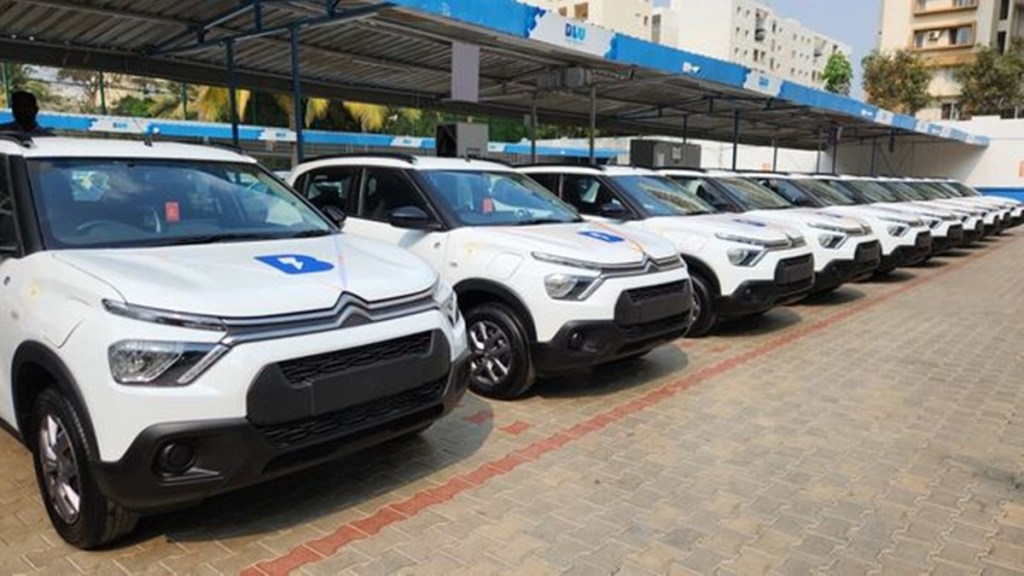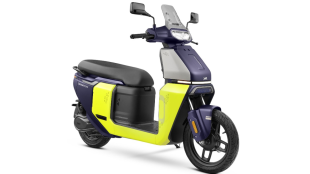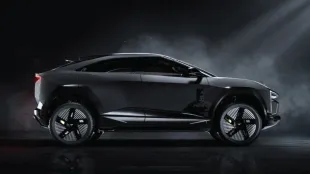Tata Motors and French automaker Citroën are bracing for a significant fallout after BluSmart —India’s largest all-electric fleet operator — abruptly suspended operations. The closure of BluSmart’s business puts at risk more than 9,000 vehicles that were yet to be delivered to the company as part of an 18,000-vehicle pact with manufacturers. The biggest order, of over 90% of those vehicles, had been placed with Tata Motors and Citroën.
In addition to Tata Motors and Citroën, BluSmart was sourcing vehicles from MG Motor, BYD, Mahindra and Mahindra, Hyundai, and Audi. Before the shutdown, BluSmart — which had once set itself a target of deploying 100,000 EVs by 2025 — managed an active fleet of 8,500 electric vehicles.
A questionnaire sent to Tata Motors, Citroën, MG Motor, BYD, and Audi remained unanswered until press time. However, insiders at two of these companies, speaking on condition of anonymity, indicated they have written off the orders.
“At this point, we have written off the order. Furthermore, demand for large-scale fleet acquisitions has all but vanished, especially following the withdrawal of Faster Adoption and Manufacturing of Electric Vehicles (FAME-II) incentives,” one executive explained.
Asked whether these orders could be redirected to other operators, the executive said, “With thousands of ex-BluSmart vehicles now entering the secondary market, there’s little to no appetite for new EV orders.”
BluSmart’s collapse will compel original equipment manufacturers (OEMs), who are staring at higher inventories, to revisit their production strategies. Experts said it is possible they will sell the vehicles at hefty discounts in a bid to offload the inventory.
Nikhil Dhaka, vice president at Primus Partners, observed that fleet operators have been pivotal to the early growth of India’s EV ecosystem. “With existing orders now on hold, OEMs would be compelled to revise their strategies and risk assessment frameworks,” Dhaka said.
BluSmart co-founder Anmol Singh Jaggi had said in a 2023 interview that more than 80% of its fleet comprised Tata Motors vehicles. Company disclosures show that Tata Motors had committed to deliver 13,500 electric cars while Citroën agreed to supply 4,000 units.
According to OEMs, Tata has delivered approximately 7,500 EVs — primarily the e-Tigor and Xpres-T models — while Citroën has delivered fewer than 500 e-C3s. The remaining orders were allocated to automakers like MG Motor, BYD, Mahindra, Hyundai, and Audi.
Cab market players argue that EVs lack substantial financial benefits. They point out that without a clear operational advantage over CNG-powered cars, the demand for EVs has remained muted.
“There is virtually no demand for new EVs in the fleet segment as they still don’t make economic sense for business operations. In real-world operations using commercial charging, both CNG and EVs incur about Rs 3 per kilometre. However, EVs come with an extra price premium of roughly Rs 3-4 lakh,” said an executive at a leading fleet operator.
For instance, the Tata Tigor CNG is priced from Rs 7.70 lakh, whereas the Tigor EV starts at a higher price of Rs 12.49 lakh.
Beyond cost concerns, vehicle quality, rising competition, and weak after-sales support are also weighing heavily on EV prospects in the fleet market.
Other taxi operators also maintain limited EV presence in their fleets. For instance, industry leader Uber has yet to fully commit to electrifying its 400,000-strong fleet, with industry estimates indicating that only around 6,000 EVs are currently in use. Beyond OEMs, the fallout may also stall India’s broader EV growth: passenger-car EV penetration has struggled to exceed 3% in FY25, and fleet purchases were seen as a key lever to boost volumes.




















